What do candidates on the Electrical Design Course actually do?
The TTS Certified design course is the pinnacle of the qualifications related to electrical installations and is preceded by the courses on the wiring regulations (C&G 2382) and the inspection and testing (C&G 2391) qualifications.
The course begins by guiding the candidates through a series of searching questions with answers provided via a combination of syndicated exercises and individual efforts. This helps to build the candidates' skills and knowledge of the design process, taking each step of the design one stage at a time.
Candidates are provided with course notes which contain useful reference material, help on various topics and suggestions for performing the necessary calculations.
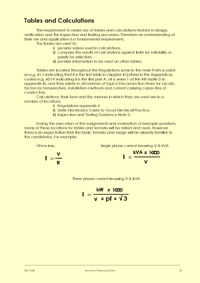 |
 |
 |
Page 10 of the course notes for the electrical design course, listing some of the equations that the candidates need to understand and use |
Page 11 of the course notes for the electrical design course, describing how electrical equipment should be selected and erected |
Page 12 of the course notes for the electrical design course, providing advice on how technical questions should be answered |
We also issue helpful design reference documents which list all the important stages in the design of an electrical installation. This again helps to clarify the process by which an electrical installation design should be performed.
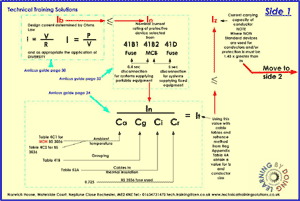 |
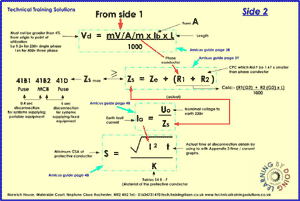 |
Page 1 of the design reference sheet for the electrical design course, depicting some of the equations that the candidates need to understand and use |
Page 2 of the design reference sheet for the electrical design course, depicting some of the equations that the candidates need to understand and use |
The written examination ordinarily found in the C&G version of this course has been dispensed with, meaning that we can concentrate on the more essential issue: that of actually designing electrical installations.
Candidates on the electrical installations design course need to complete a design project. This is usually started off on the course itself, but it also requires the candidates to spend time (40 hours is suggested) to complete it in their own time. Typically the project requires them to design the complete electrical installation of a commercial building, specifying all the cabling, switchgear, cable runs etc required.
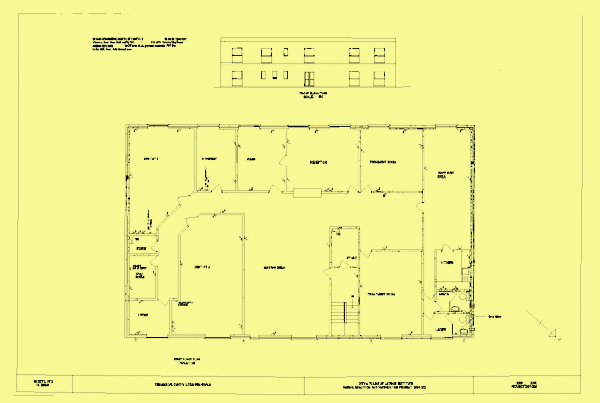 |
This is an example of the design project for the electrical design course |
Candidate's project submissions vary in length and detail but the following are example of submissions that we have received, showing tables created to list the circuit specifications, the distribution board arrangements and the lighting circuits designed by the candidate.
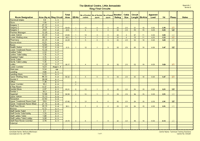 |
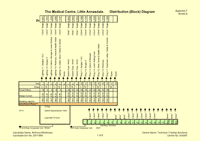 |
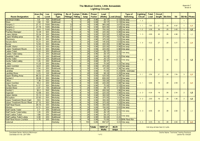 |
This is an example of a candidate's submission for the design project on the electrical design course, listing the circuit specifications for the design |
This is an example of a candidate's submission for the design project on the electrical design course, showing the distribution board arrangements for the design |
This is an example of a candidate's submission for the design project on the electrical design course, listing the lighting circuits used for the design |
Candidates also have to complete the electrical installation certificates, inspection schedule and test results schedule for their design, using the appropriate IET forms.
If you would like to learn more about the non-C&G version of the electrical design course then please call us.


